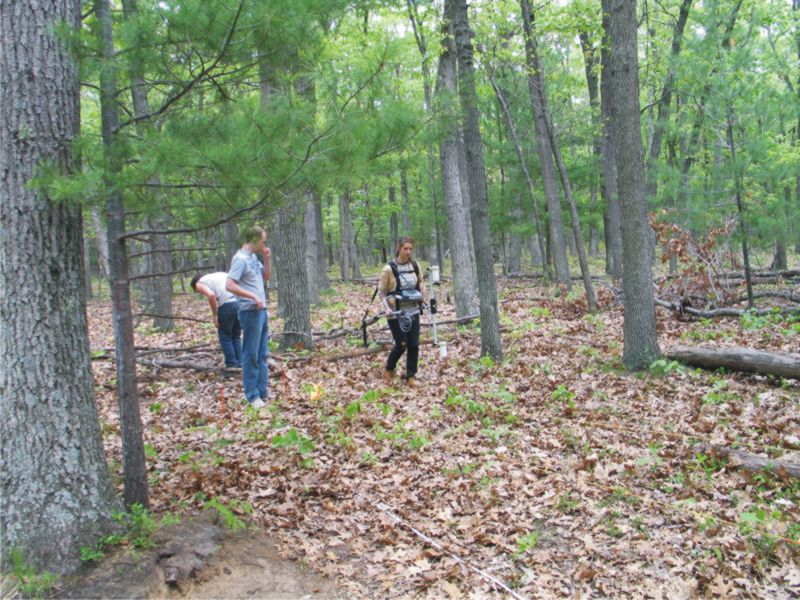
 Previous
Excavations and Geophysical Discoveries at a Prehistoric Earthwork
Site
in Western Michigan
Previous
Excavations and Geophysical Discoveries at a Prehistoric Earthwork
Site
in Western Michigan 
 Previous
Excavations and Geophysical Discoveries at a Prehistoric Earthwork
Site
in Western Michigan
Previous
Excavations and Geophysical Discoveries at a Prehistoric Earthwork
Site
in Western Michigan Sherrod, Laura, Brashler, Jan, and Gaff, Donald, 2011, Previous Excavations and Geophysical Discoveries at a Prehistoric Earthwork Site in Western Michigan [abs]: Symposium on the Application of Geophysics to Engineering and Environmental Problems - Charleston, South Carolina (10-14 April 2011).
 Geophysical
surveying was performed during the summer of 2010 at the South Flats
Earthwork Site (20MU2) in Muskegon County, Michigan. This
prehistoric earthwork site is a circular feature of raised earth
material located in a present-day young oak forest. The
enclosure
is approximately 25-30m in diameter and has a width of 4m around the
perimeter where the ground relief is altered approximately
0.5m.
It is located within the Muskegon State Game Area on a bluff
overlooking the Muskegon River. The site was first excavated
by
the Michigan archaeologist George Quimby in 1937 and has been only
moderately disturbed by anthropogenic sources since that time.
Recent excavation was performed in 2006 by a team of researchers
from
Grand Valley State University. This field work clarified the
results and aided in the interpretation of the records kept of the
1937
excavation. Additionally, the recent excavations increased
overall knowledge of the role that earthwork structures played in
the
cultures of the time.
Geophysical
surveying was performed during the summer of 2010 at the South Flats
Earthwork Site (20MU2) in Muskegon County, Michigan. This
prehistoric earthwork site is a circular feature of raised earth
material located in a present-day young oak forest. The
enclosure
is approximately 25-30m in diameter and has a width of 4m around the
perimeter where the ground relief is altered approximately
0.5m.
It is located within the Muskegon State Game Area on a bluff
overlooking the Muskegon River. The site was first excavated
by
the Michigan archaeologist George Quimby in 1937 and has been only
moderately disturbed by anthropogenic sources since that time.
Recent excavation was performed in 2006 by a team of researchers
from
Grand Valley State University. This field work clarified the
results and aided in the interpretation of the records kept of the
1937
excavation. Additionally, the recent excavations increased
overall knowledge of the role that earthwork structures played in
the
cultures of the time.